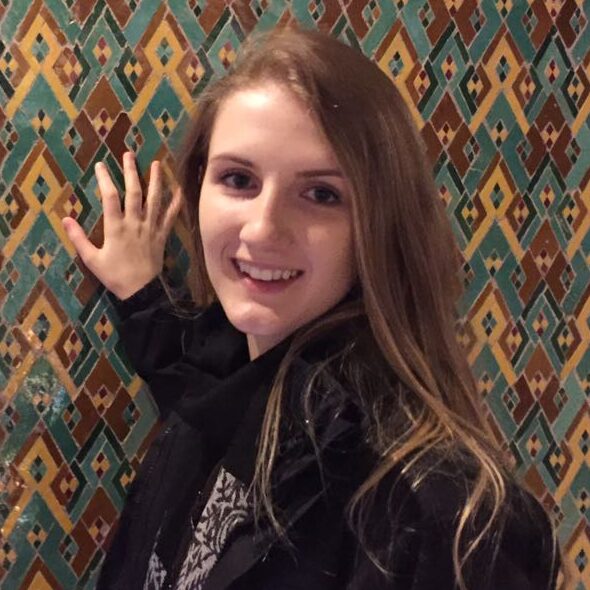Introduction
“Sensory Symphony”: Painting Blindfolded is an invitation to explore art beyond visual limits. By covering your eyes, you amplify your other senses—touch, hearing, emotion—and dive into a deeply intuitive creative experience.
This isn’t just a tutorial on technique but a profound sensory journey. Through music, textures, and free gestures, you’ll discover how the absence of sight can liberate your most authentic artistic expression.
Designed for beginners, this guide combines enthusiastic and informative language with hands-on steps, synesthetic insight, and emotional discovery.
What Is Blind Painting? Exploring Beyond Sight
Blind painting goes beyond traditional blind contour drawing. It’s not just about sketching unseen shapes—it’s about intentionally turning off your vision to free your movements from judgment and control.
- No visual correction: you can’t fix or overthink what you can’t see.
- Other senses become primary: your body and feelings guide the action.
- Intuitive expression: art becomes a flow of sensations rather than a final result.
This creative act transforms drawing into a sensory dialogue between touch, sound, and emotion.
Setting the Stage: Creating a Sensory Space
To fully immerse in the experience, prepare your space mindfully:
- Soft lighting: use candles or dim lamps for calm energy.
- Comfortable setup: sturdy chair, stable surface, towels nearby for cleanup.
- Good audio quality: use headphones or a clear speaker.
- External silence: reduce distractions so your senses can tune inward.
These subtle details foster trust and help release tension, enabling your full sensory engagement.
Choosing by Touch: Materials That Speak
Before blindfolding yourself, get familiar with your materials by feel:
- Oil pastels: smooth, creamy, rich texture under your fingers.
- Charcoal: grainy, dry, slightly dusty with audible friction.
- Clay or modeling dough: tactile and shapeable, a sculptural medium.
- Brushes and acrylic or gouache: rich texture, expressive flow, layers of feeling.
Let your hands “see” the materials—their weight, texture, and sound. This invisible selection is your first creative decision.
The Soundtrack of Emotion: Playlists That Guide Movement
Let music become your emotional compass. Try these themed playlists:
Anger / Release
Heavy beats, intense riffs, fast rhythms.
Genres: alternative rock, post-punk, industrial.
Expect: aggressive gestures, quick marks, loud scribbles.
Calm / Grounding
Ambient soundscapes, soft piano, nature sounds.
Expect: long, fluid strokes and meditative pacing.
Nostalgia / Melancholy
Cinematic strings, emotional instrumentals.
Expect: repeated shapes, soft pressure, circular motion.
Pick your playlist before blindfolding. Let the rhythm and tone lead your hands—it’s a dance between sound and movement.
Blind and Free: A Step-by-Step Artistic Journey
- Put on your blindfold: ensure comfort, no pressure on the eyes.
- Touch your chosen material: explore its shape and sensation.
- Start the music: let the first moments set your mental tone.
- Move your hands: press, scribble, push—follow your instinct.
- Tune in: feel pressure, temperature, resistance.
- Allow pauses: breathe and reflect mid-process.
- Stop when it feels complete: don’t force an ending.
- Remove the blindfold only when you truly feel ready.
Synesthesia in Motion: When Touch and Sound Paint in Place of Sight
This is active synesthesia:
- Sound drives rhythm: tempo shapes your motion.
- Touch informs intensity: soft or forceful gestures based on texture.
- No visual bias: decisions come from emotion, not visual accuracy.
The result? An emotional painting layered with textures and movement—more raw than polished, more real than planned.
What You Might Feel: Common Reactions from Blind Creation
Artists who explore blind painting often report:
- Emotional freedom: unexpected joy, tears, laughter.
- Physical awareness: your body “speaks” through gesture.
- Visual surprise: the final image looks strange but meaningful.
- Creative insight: unexpected forms spark new artistic ideas.
These experiences reveal how powerful the senses become when freed from the eye’s dominance.
Art as Meditation: How the Practice Expands Creativity
This is more than an exercise—it’s a creative meditation:
- Present-moment focus: your attention follows sound and motion.
- Judgment melts away: perfection is irrelevant.
- Mind-body connection: physical action aligns with emotion.
For beginners, it’s a liberating way to engage with art—safe, freeing, and deeply personal.
Revisiting Your Work: Interpret Without Judgment
Once complete, take time to look at your piece gently:
- Observe the rhythm: where is it heavy? Where is it light?
- Notice emotional tone: does it feel warm, raw, distant?
- Write your reflections: what surprised or moved you?
- Use it as a seed: this raw expression can inspire future works.
Avoid criticism, this is not about beauty but about connection.
Final Thought: Sightless, Yet Fully Seen
Blind Painting is an intimate, liberating ritual. Without the eye’s interference, your intuition leads. You don’t just draw- you feel, listen, remember, and release.
Try it today: pick a material, press play on a song, and cover your eyes. Then let go. Let your body express what your mind may hide.
And when you open your eyes, you just might see yourself in ways you never expected.
Have you tried painting blindfolded? Share your experience in the comments. Let others feel inspired by your textures, sounds, and stories. Because in sensory art—every gesture counts.

